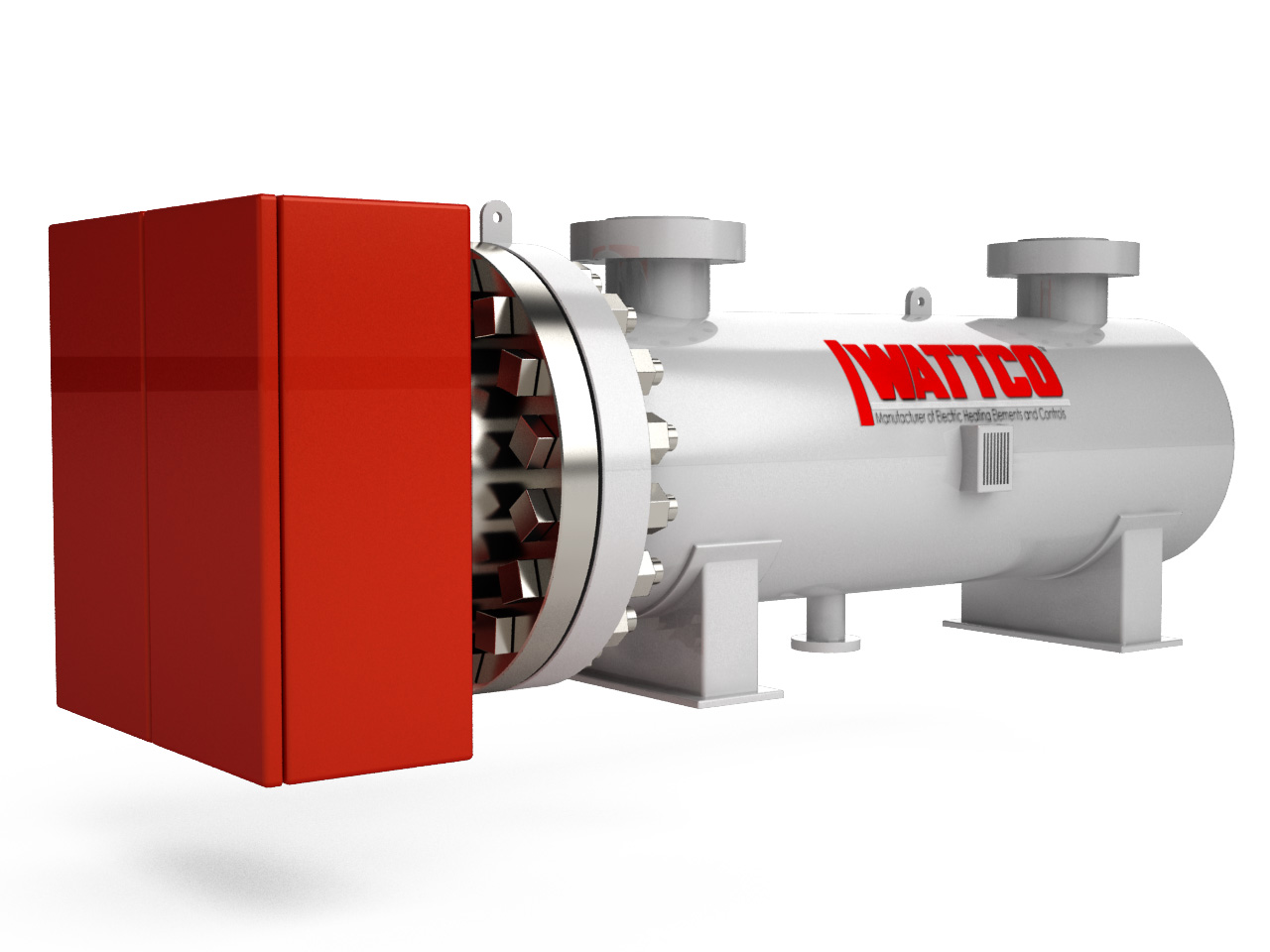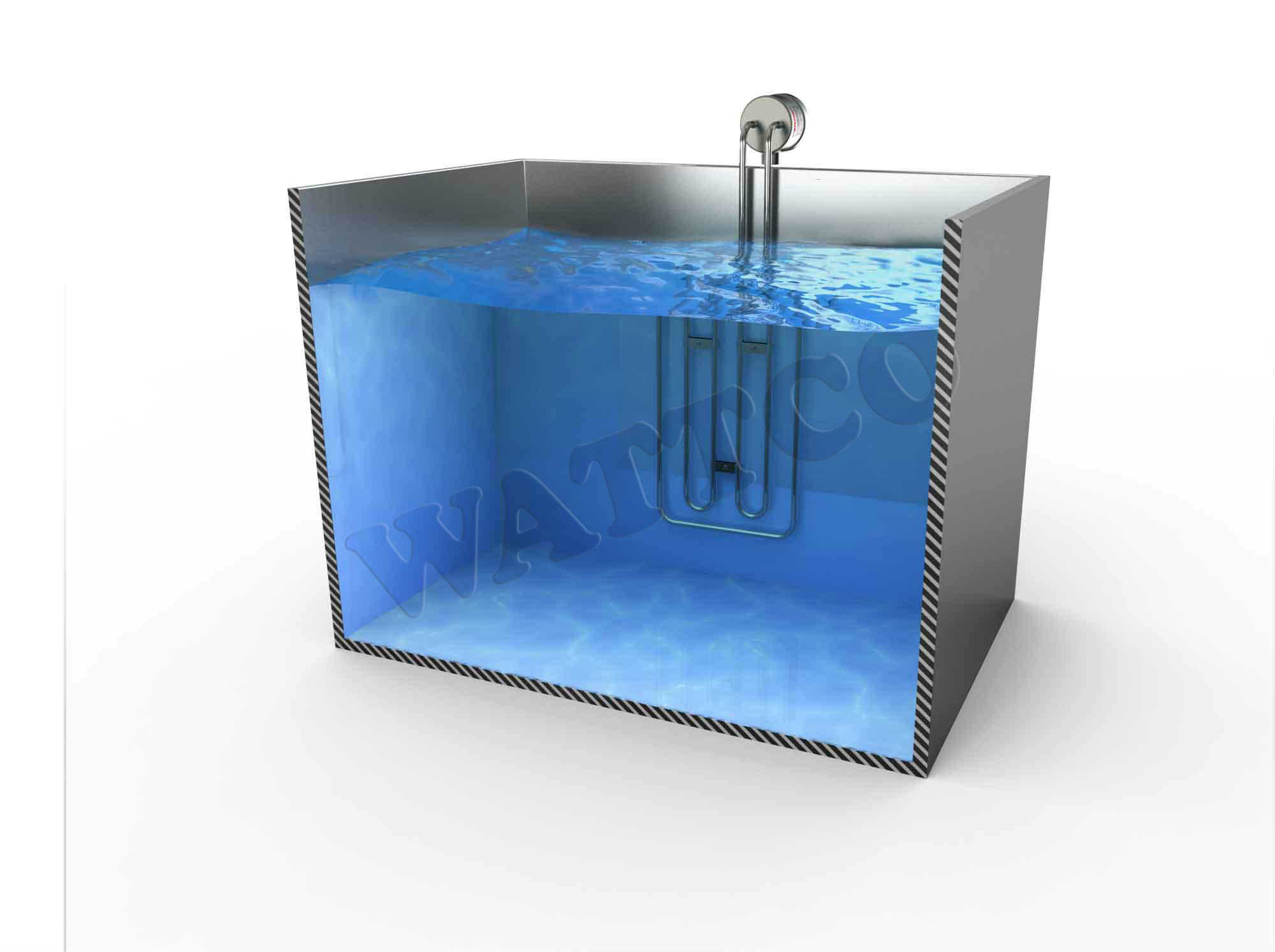Electric Industrial Heaters
This form of heating has found several uses, such as lighting incandescent light bulbs, burning electric stoves, and soldiering irons. Our focus in this article lies in the use of electric heaters in the petrochemical industry.
Electric Heater Types
Flanged electric heaters are made of hairpin bent tubular[2] elements welded or brazed into a flange. Electric connections are provided to these elements via wiring boxes. These heaters are mostly used for heating water, oil, corrosive solutions, and heat transfer fluids. They utilize standard pipe flanges ranging from 3-14 inches to support high tank pressure in liquids and are installed through a matching companion flange to the tank wall. Because flange electric heaters are available in a variety of sizes, kilowatt ratings, voltages, terminal housings, and sheath materials, they are well suited for both domestic and industrial heating applications.
 Immersion Heaters:
Immersion Heaters:These heaters are made by encasing a nichrome resistance heating wire in a ceramic jacket. An Inconel sheath (a form of stainless steel that is highly corrosion and heat resistance) envelopes the jacket.
Electric Heater Applications
Similarly, immersion heaters are ideal for working with oils, gases, viscous, molten materials, and process solutions. These heaters also come in a wide selection of sizes, sheath materials, terminations connections, kilowatt ratings, and voltages.
Electric Heater Benefits
Electric heaters also offer low cost installation as setting up these machines is not so complicated. As mentioned above, no piping is required, so you just need to have a connection to an electric circuit. This particularly helps during re-wiring and refurbishing.
Most importantly, electric heaters are safe and reliable. As stated before, no internal burning is required in this heating system, which eliminates the risks such as explosions and carbon monoxide poisoning. Moreover, since there are no radiators, problems of leakage or bursting will not only be avoided, but there will also be less risk of damage to properties. All these factors also make electric heaters environmentally friendly as well, protecting the health of the workforce as well as the surrounding areas of the factory/plant.
It has been seen in the past couple of years that as the oil and gas reserves deplete, the demand for natural gas experiences an upward trend. In this setting, electric heaters can be used in oil fields to preheat produced fluids. Other benefits include moisture resistance, no sound pollution, portability, precision, durability, control of temperature and distribution of heat energy.
Using Steel and Stainless Steel in Electric Heating Applications
When it comes to electrical heating, steel not only provides durability and corrosion resistance, but the chance of heat removal is also minimized and therefore greater efficiency is achieved. Stainless steel on the other hand is ideal for jobs that involve corrosive solutions.
Conclusion
This relationship is known as Joule’s first law. (source)
